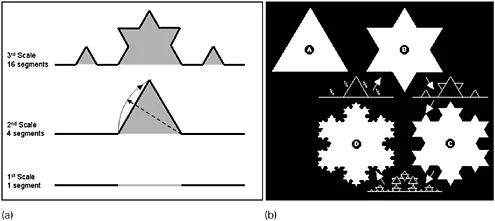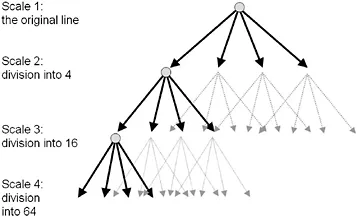
This is a test
- 216 pages
- English
- ePUB (mobile friendly)
- Available on iOS & Android
eBook - ePub
Embracing Complexity in Design
Book details
Book preview
Table of contents
Citations
About This Book
Outlining state-of-the-art developments in the area of complexity and design, this book collates them into a unique and authoritative resource for both the design and complex systems communities. The book is based on research which focuses on a variety of different themes and domains, including architecture, engineering, environmental design, art, fashion and management.
A ground-breaking publication marking a new era of appreciation of the import of complexity on design, this book is essential reading for those studying complexity or design.
Frequently asked questions
At the moment all of our mobile-responsive ePub books are available to download via the app. Most of our PDFs are also available to download and we're working on making the final remaining ones downloadable now. Learn more here.
Both plans give you full access to the library and all of Perlego’s features. The only differences are the price and subscription period: With the annual plan you’ll save around 30% compared to 12 months on the monthly plan.
We are an online textbook subscription service, where you can get access to an entire online library for less than the price of a single book per month. With over 1 million books across 1000+ topics, we’ve got you covered! Learn more here.
Look out for the read-aloud symbol on your next book to see if you can listen to it. The read-aloud tool reads text aloud for you, highlighting the text as it is being read. You can pause it, speed it up and slow it down. Learn more here.
Yes, you can access Embracing Complexity in Design by Katerina Alexiou,Jeffrey Johnson,Theodore Zamenopoulos in PDF and/or ePUB format, as well as other popular books in Architecture & Architecture General. We have over one million books available in our catalogue for you to explore.
Information
1
Generating cities from the bottom up
Using complexity theory for effective design
Michael Batty
1 Introduction
This essay introduces the idea that cities evolve from the bottom up, that patterns emerge as a global order from local decisions. As the future is unknowable, cities must be planned according to this type of complexity. We begin by introducing the idea of hierarchy and modularity as the basis of a generative process that leads to patterns that are self-similar over many scales, patterns that are fractal in their structure. We then present a simple model of growth that generates such patterns based on a trade-off between connecting to the growing structure and seeking as much free space as possible around any location within it. These are the tensions that exist in real cities through the quest by individuals to agglomerate. Once we have sketched the model, we demonstrate how this generative process can be simulated using cellular automata, allowing us to think of the logic in terms of rules that represent how existing development takes place. By changing the rules, we can introduce optimality into the process, developing the logic to enable certain goals to be pursued. We conclude with various demonstrations of how idealised plans might be conceived within this complexity which is generated from the bottom up.
2 A new paradigm for city planning
Cities are built from the bottom up. They are the product of millions of individual decisions on many spatial scales and over different time-intervals, affecting both the functioning and the form of the city with respect to how it is structured and how it evolves. It is impossible to conceive of any organisation that can control such complexity, and thus the very question of the extent to which the city might be ‘planned’ is thrown into a new light. Throughout history, plans for cities have been proposed as a top-down response to perceived problems and the realisation of ideals, but there are few examples where control has been sufficiently strict to enable their complete implementation. Most development in cities occurs without any central planning yet cities continue to function, often quite effectively, without any top-down control. Cities as part of societies and economies not only hold together without any top-down control but actually evolve their own coordination from the bottom up, their order emerging from these millions of relatively uncoordinated decisions which express Adam Smith’s characterisation of the economy as being managed by an ‘invisible hand’.
Fifty years ago, cities were first considered to be systems whose functioning was based on many interacting parts and whose form is manifested in a relatively coordinated hierarchy of these parts (or subsystems). Yet systems in these terms were conceived of as being centrally controlled. As the paradigm developed, there was a subtle shift to the notion that the order in many systems and their resulting hierarchies emerged from the way their parts or elements interacted from the bottom up rather than from any blueprint imposed from the top down. The complexity sciences developed to refresh this systems paradigm, with the focus changing from an analogy between cities as machines to one based on evolving biologies, whose form was the resultant of subtle and continuous changes in their genetic composition at the level of their most basic component parts. This shift in thinking is wider than cities per se. It is from thinking of the world in terms of its physics to one based on its biology, from top down to bottom up, from centralised to decentralised action, and from planned forms to those that evolve organically.
In this chapter, I shall argue that a new paradigm for planning cities is required which takes account of how they are built, which is largely but not exclusively from the bottom up. It draws on recent developments in complexity theory which, in terms of city planning, draws on the traditions first suggested by Patrick Geddes (1915) in his book Cities in Evolution at the beginning of the last century but taken up in earnest in the early 1960s by Christopher Alexander (1964) and Jane Jacobs (1962) amongst others. This paradigm has taken a century in sensitising us to the need to step carefully when intervening in complex systems. Its message is that we plan ‘at our peril’ and that small interventions in a timely and opportune manner which are tuned to the local context are more likely to succeed than the massive top-down plans that were a feature of city planning throughout much of the twentieth century. To impress this new style of planning, we shall proceed by analogy using metaphors about how cities are formed taken from physics and biology. We shall first outline the notion of modularity and hierarchy, of self-similarity and scale in the physical and functional form of cities, and then we shall present ways in which basic functions generate patterns that fill space to different degrees. Cities develop by filling the space available to them in different ways, at different densities, and using different patterns to deliver the energy in terms of people and materials which enable their constituent parts to function. We shall demonstrate a simple diffusion model, and then generalise it to grow city forms and structures in silico. We shall allude to city plans in history that demonstrate our need to plan with and alongside the mechanisms of organic growth rather than against these processes, which has been the dominant style of planning in the past century.
3 Modularity, hierarchy and self-similarity
There is wonderful story first told by Herbert Simon (1962) which illustrates the importance of hierarchy and modularity in the construction of stable and sustainable systems. Simon tells of two Swiss watchmakers, Hora and Tempus, who both produced excellent but identical watches, each of a thousand parts. The key difference between the watchmakers was in the processes they used to produce each watch. Tempus, for example, built each watch by simply taking one part and adding it in the requisite order to the next until the whole assembly was complete. Hora, however, built up his watches in subassemblies, first of ten parts each. Once he had produced ten subassemblies, he added these into a large subsystem containing a hundred parts. When he had added all his ten-part assemblies into the larger parts of one hundred, he completed the whole watch by simply adding the ten larger assemblies together. It took Hora only a fraction longer to add the subassemblies. To all intents and purposes, the completed watches took the same time and were no different.
As the fame of the watchmakers grew, they received more and more orders; but, in this fictional world, the only way they could receive these orders was by telephone. Every time the telephone rang Tempus had to put down the watch, and it fell to pieces, so he had to start again once he had taken an order. Hora, on the other hand, simply lost the subassembly he was working on when the telephone rang and he had to put down the watch to answer it. You can see immediately what happened in the long term. Tempus found it more and more difficult to complete a watch as the telephone rang more and more, while Hora simply traded off his telephone time for watchmaking, for his process was robust. Ultimately Tempus went out of business while Hora prospered, and the moral of the story is that sustainable systems which can withstand continued interruptions of this kind are built in parts, from the bottom up, as modules to be assembled into a hierarchy of parts.
Modular construction is not simply a functional process of ensuring that component parts of a system are stuck together efficiently and sustainably but also a means of actually operating processes that drive the system in an effective way. For example, different functions which relate to how the economy of a city works depend on a critical mass of population such that the more specialised the function, the wider the population required to sustain it. In short, more specialised functions depend on economies of scale such that the size and spacing of various functions produces a regular patterning at different hierarchical levels. The modules are thus replicated in a way that they change their extent with their scale. We can demonstrate this point using some simple geometry that illustrates how we can scale a physical module, producing a fractal that is similar on all scales. Imagine that we need to increase the space required for planting a barrier along a straight path. If we divide the line of the path into three equal segments, we can take two of these segments and splay them away from the path so that they touch and form an equilateral triangle in the manner that we show in Figure 1.1(a). This clearly increases the length of the line L (which has an original length of three units) by one unit, so that the new length of the line becomes (4/3)L. We can further increase the length of the line by subdividing each segment into three and displacing the central portion of each of the original segments to form the same equilateral triangle but at a scale down from the original. If this is done for each of the original four segments, then the length of the second line composed of these four segments increases by 4/3. This in turn is 4/3 the length of the original line L, and the new line is now (4/3)(4/3)L. We can continue doing this at ever finer scales, and the length of the line at scale n thus becomes (4/3)nL.
This construction is a recursion of the same rule at different scales, and it generates a pattern which is self-similar in that the motif—the triangular displacement—occurs at every scale and is in a sense the hallmark of the entire construction. The structure grown from the bottom up produces a shape that is a fractal, a regular geometry composed of irregular parts which are repeated on successive scales, which is indicative of the same processes being applied over and over again. The process can be viewed as a hierarchy which is clearly present in the pattern itself but, in terms of the recursive process, can be abstracted into the usual tree-like diagram which we show in Figure 1.2.
There are several strange consequences to the process that we have just illustrated. If the process of adding more and more detail of the same kind continues indefinitely, the length of the line increases to infinity, but it is intuitively obvious that the area enclosed by the resulting shape either in the Koch curve in Figure 1.1(a) or the Koch island in Figure 1.1(b) converges to a fixed value. Second, if the line becomes more and more convoluted in filling the plane, then it would appear that the line which has Euclidean dimension of 1 seems to have the dimension of the plane which is 2. This concept of space-filling can be formally demonstrated to be encapsulated in the idea of fractal dimension. The Koch curve in Figure 1.1(a) has a fractal dimension about 1.26 while a more convoluted line like a fjord coastline has something like 1.7. Rather smooth curves such as the coastline of southern Australia have a fractal dimension of about 1.1. In fact the inventor of the concept of fractals, Benoit Mandelbrot, wrote a famous paper in Science in 1967 which was entitled ‘How long is the coast of Britain? Statistical self-similarity and fractional dimension’. To cut a very long story short, objects which are irregular in the way we have shown, and which manifest self-similarity, are fractals whose dimension lies between the dimension that they are defined by and the dimension of the space that they are trying to fill. In cities, filling the two-dimensional plane with particular forms of development from the parcel to the street line, and at different densities, suggests that their fractal dimension lies between 1 and 2. Thus this dimension becomes the signature of urban morphology, which is the outcome of processes that generate fractal shapes (Batty and Longley 1994).

Figure 1.1 Constructing a space-filling curve: the Koch snowflake curve: (a) successive displacement of the central section of a line at ever finer scales; (b) application of the displacement rule to the lines defining a triangle shape called a Koch Island(a) (b)

Figure 1.2 The hierarchy of composition in constructing a fractal
There is, however, a much more literal morphology which is fractal, and this is the shape of an object or set of linked objects that form a tree or dendrite. If you want to transport energy from some central source to many distant locations, it is more efficient to develop infrastructure that captures as much capacity for transfer as near to the source as is possible. This is rather easy to demonstrate graphically, for if there are sixteen points arranged around a circle, then rather than build a link between the source and each of these sixteen points it is more efficient to group the links in such a way that the distance to these different locations is minimised. In Figure 1.3(a), assuming that each single link is of distance 1 unit, the length of the routes needed in total to service these locations (‘fill the space’) is sixteen in comparison with the grouping of these routes into two, then four, then eight, which is shown in Figure 1.3(b). The total distance of this arrangement in Figure 1.3(b) is something between a half and three-quarters of the original form in Figure 1.3(a) depending on the precise configuration, although the capacity of the links which take more traffic nearer the source are bigger, and this would incur extra costs of construction. Nevertheless, this demonstrates the important point that, where resources are to be conserved (which is in virtually every situation one might imag...
Table of contents
- Cover Page
- Title Page
- Copyright Page
- List of tables
- List of figures
- Notes on contributors
- Editors’ preface
- 1 Generating cities from the bottom up: using complexity theory for effective design
- 2 Embracing complexity in building design
- 3 Complexity in engineering design
- 4 Using complexity science framework and multi-agent technology in design
- 5 Complexity and coordination in collaborative design
- 6 The mathematical conditions of design ability: a complexity theoretic view
- 7 The art of complex systems science
- 8 Performance, complexity and emergent objects
- 9 Developments in service design thinking and practice
- 10 Metamorphosis of the Artificial: designing the future through tentative links between complex systems science, second-order cybernetics and 4D design
- 11 Embracing design in complexity